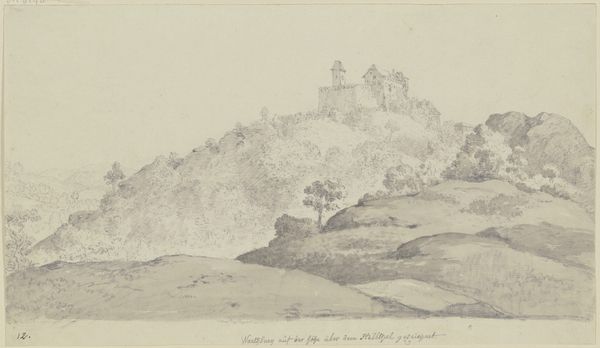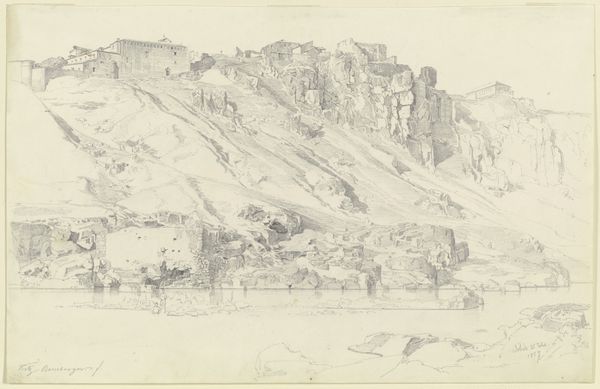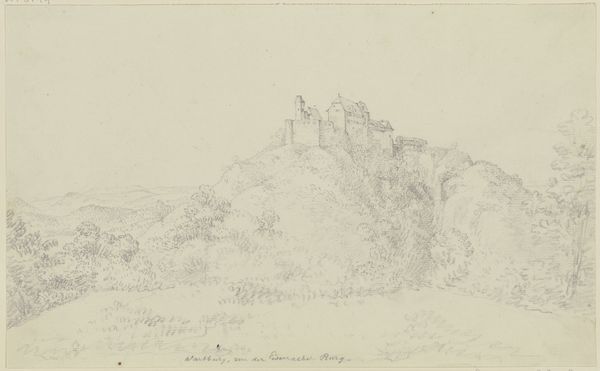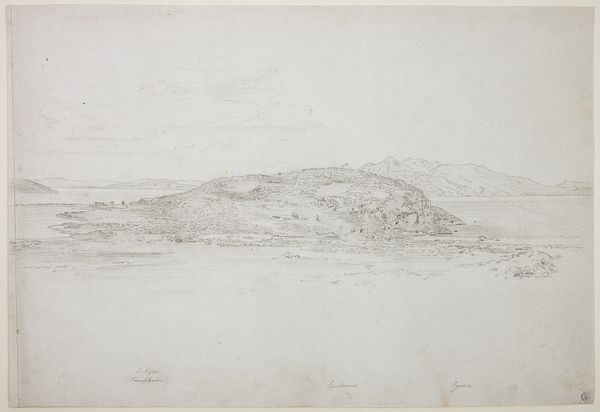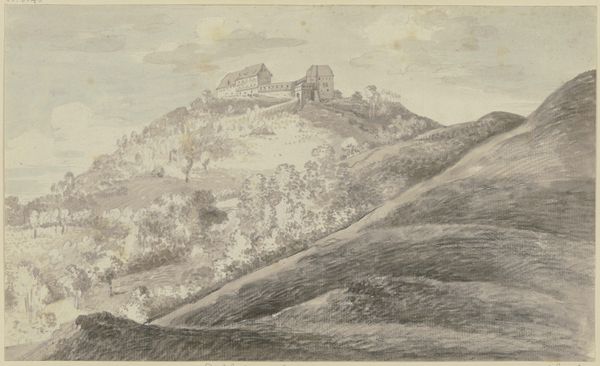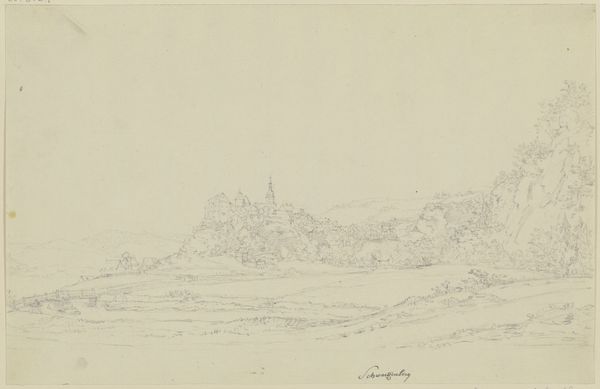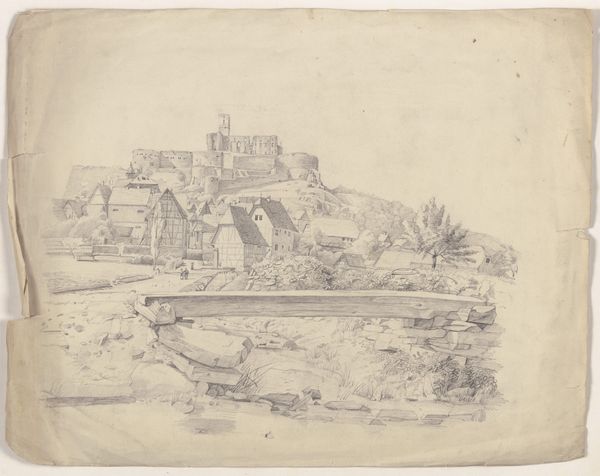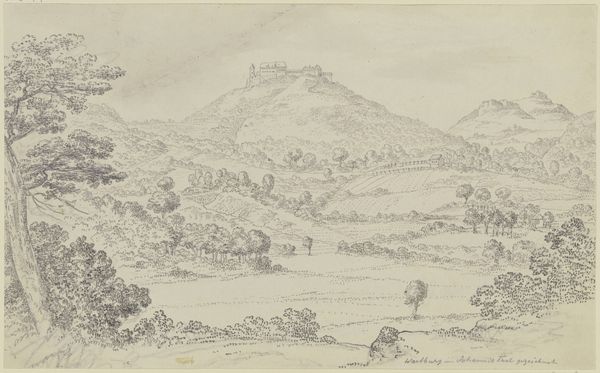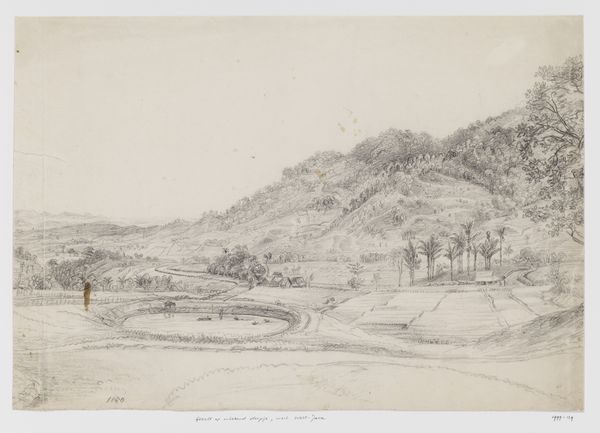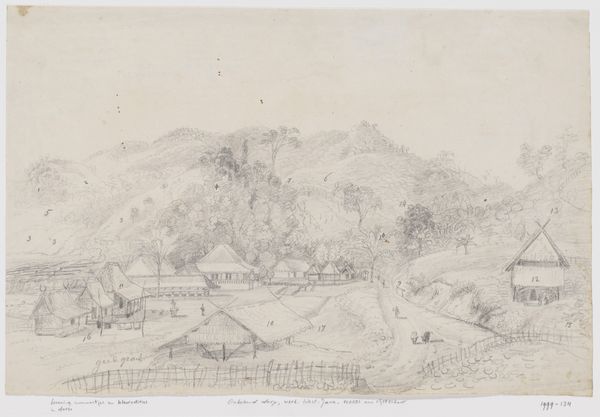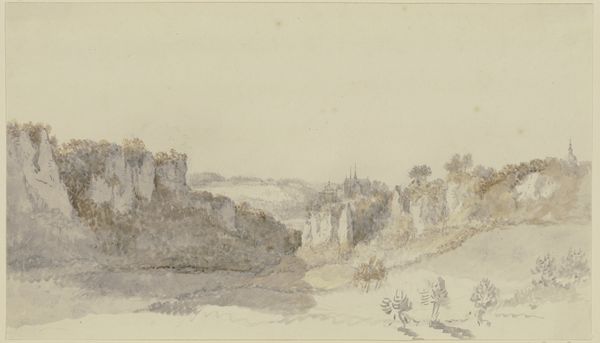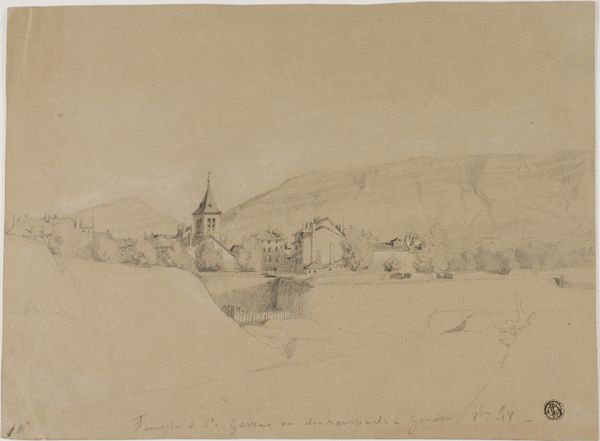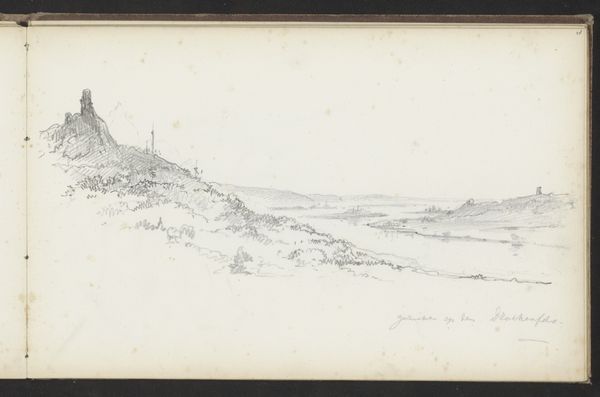
drawing, pencil
#
drawing
#
pencil sketch
#
landscape
#
romanticism
#
pencil
Copyright: Public Domain
Curator: Victor Müller created this pencil drawing, “Ansicht von Falkenstein im Taunus," in 1844. It's currently held here at the Städel Museum. Editor: The first word that comes to mind is delicate. It feels like a whispered secret, almost fragile. I love how much texture he achieves with just pencil. Curator: Yes, look at how Müller uses varying pressure to create depth, giving texture to the rocky foreground while the village nestled on the slope uses a lighter touch. He masterfully uses the properties of graphite to its full extent. Editor: Exactly! You can practically feel the coolness of those foreground rocks and the gentle breeze through the trees up on the hill. I find it strangely calming and melancholic all at once, as if it were trying to show the romantic connection between the village and nature. Curator: And we should note that Müller's technique would have required a significant amount of time and patience. This was pre-photography; representing landscapes with such detail underscored their cultural and economic value. Editor: Absolutely, and think about the paper itself— handmade, each sheet a unique canvas. There’s also a sense of performance in the act of drawing like this, capturing the essence of place and imbuing it with emotion, right? Curator: Definitely, Müller transforms a mundane subject into a visually striking one. It highlights Romanticism’s deep interest in nature and its ability to move people spiritually, while quietly elevating drawing from just preparation for paintings to art in its own right. Editor: Looking at this has changed my perception of this entire historical period! To be honest, I usually skim past landscapes of this era, but I’m struck by its intimacy. Curator: The act of creating the work speaks volumes and I like the new perspective on its material value. Editor: I completely agree, its delicacy combined with this detailed precision. Beautiful!
Comments
No comments
Be the first to comment and join the conversation on the ultimate creative platform.
